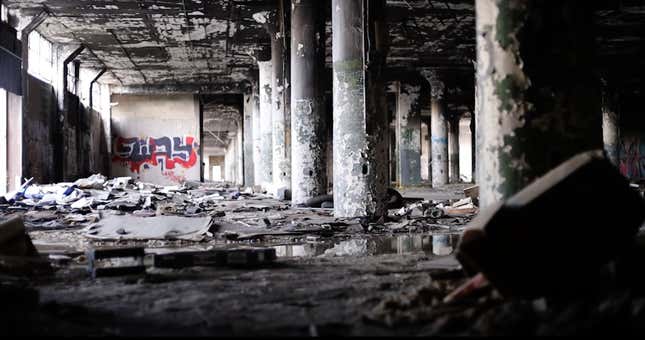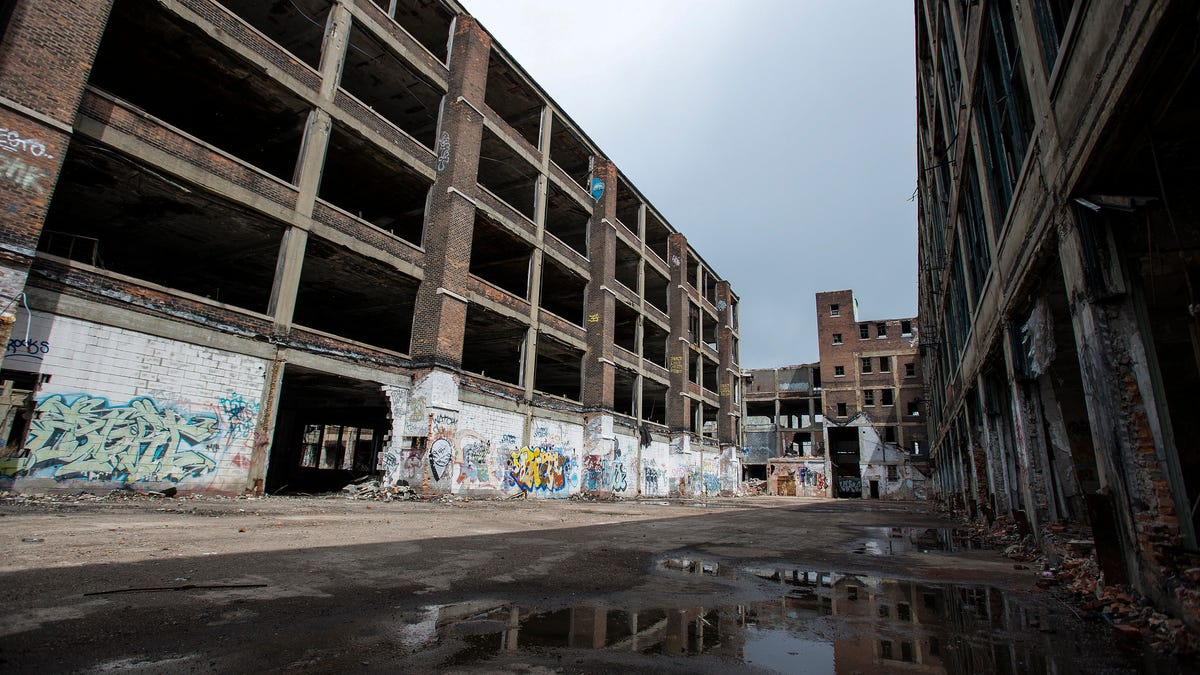
This site became the headquarters for the American Motor Corporation through a rather circuitous route, according to Historic Detroit. It was first built for the Kelvinator Corporation, famous for building some of the first commercially available refrigerators for home use. From there it gets a little weird:
In 1925, the Kelvinator Corporation produced the industry’s first self-contained electric home refrigerator, and its fortunes and manufacturing needs grew. This administration building and factory were built in 1927 and designed by the Detroit firm Smith, Hinchman & Grylls. The lead architects on the project were Amedeo Leoni and William E. Kapp.
The centerpiece of the complex was a tall office tower with a three-story factory and power plant behind hit. All in, the complex comprised 1.5 million square feet. Above the tower’s main entrance was inscribed a quote from Lord Kelvin: “I’ve thought of a better way.”
Following the January 1937 merger between Kelvinator and Nash Motors of Kenosha, Wis., the building became the home of Nash-Kelvinator. With the merged company’s merged production needs, the Plymouth Road site expanded the plant to 1.46 million square feet in 1940.
During the war effort in the early 1940s, Nash-Kelvinator assembled airplane propellers and hundreds of helicopters at the plant.
Nash-Kelvinator merged with Hudson Motors in 1954 to form the American Motors Corporation, which continued to call the Plymouth Road plant home.
And that’s how you go from refrigerators to cars! The site served as a headquarters for decades before AMC moved to nearby Southfield, Michigan in 1975. It would live on as the engineering offices for Jeep until Chrysler bought the brand and relocated to a facility in Auburn Hills, Michigan. Even then, the building wasn’t totally empty until 2009.
The property would go to private buyers, who would muck around and dump at the site until the city took control in 2018. By 2021 the mayor of Detroit promised the demolition of the site, which was completed in 2023.


